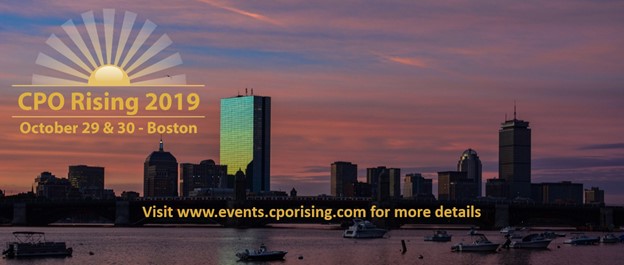[Editor’s Note: Today’s article is a guest publication from Netstock. Ardent Partners is happy to review and feature guest publications from authors across the procurement and supply management industry. If you or someone you know would like to become a guest contributor, please contact us at editor at cporising dot com. Thanks!]
There is an ongoing battle between government, industry, and environmental organizations around the escalation of CO2 emissions. The build-up of CO2 emissions results in our earth heating up, creating havoc on our climate and resulting in the increase of a whole array of natural disasters. Just over the last few months, we have seen the loss of lives, homes, and jobs as a result of Hurricane Dorian in the Bahamas, the fires in the Amazon Basin, and Cyclone Idai in Mozambique. Natural disasters have both long- and short-term effects on economic growth, development, and poverty. While we wait for government and industry to align and implement stricter regulations around harmful emissions, we need to try and ‘manage’ disasters as best we can.
Consider the implications around one recent disaster, that of the fires in the Amazon Basin. The Amazon Rain Forest is known as the ‘lungs of the planet’ as it produces more than 20% of the world’s oxygen, which influences the rainfall patterns as far afield as the U.S. A massive 70% of South America’s GDP is produced from areas that receive rainfall or water from the Amazon. As a result, many companies rely on raw materials and other goods including meat, timber, oil, agriculture, and pharmaceuticals from this region. If your business was built on supply from this region, think what a detrimental impact this would have.
Although we can’t predict or prevent these “acts of God” from happening, there are small measures we can put in place to lessen the fallout.
- Know what natural disasters your region is prone to. If you are in Hong Kong, for example, there is the reality of cyclones; in South Africa, it may be drought; in Indonesia, earthquakes, and Tsunamis. Wildfires are frequent in forested areas of the U.S. and Canada and highly vegetated areas of Australia and the Western Cape in South Africa. Look at ways that you can equip your warehouse from a construction perspective. Wood and steel, for example, have more give than un-reinforced concrete, so you would instead choose these materials when building in a fault zone. If your business is in an area where fires are frequent, you can create a parking lot or leave a large clearing of sand around your warehouse. This will act as a firebreak, and hopefully, avoid the destruction of your warehouse.
- Know in which countries your suppliers are located. Your fast-moving, essential stock items are your primary concern. By knowing where your suppliers are located and which of the natural disasters by which they are most affected will enable you to build a list of contingency suppliers. These contingency supplies could meet your demand in an emergency should your leading supplier be affected by a natural disaster.
- Have systems that provide you with real-time data. Real-time systems give companies the benefit of knowing exactly where their orders are at any given time. If you hear about a natural disaster and are unable to get in touch with your supplier, you can at least see where your orders are and take action.
- Have a range of transportation methods at your disposal. It is unusual for all modes of transport to be affected by a natural disaster. Ensure that you have access to and agreements with multiple transport companies within the various methods of transportation.
- Use cloud-based solutions. By using cloud solutions, it won’t be detrimental to your business if all your on-premise hardware and software is destroyed. Having cloud-based solutions means that all your documents and company information are safely stored in the cloud. Also, your staff will be able to log back in and resume their tasks from anywhere in the world.
- Maintain enough insurance for your business and equipment. Many insurance companies won’t cover damage as a result of the ‘act of God;’ or if they do, they will charge much higher monthly premiums. Be sure to get whatever cover you can.
Looking at the increase in natural disasters, one can’t help but wonder what type of world (if any) we are leaving our grandchildren. Business owners, particularly in the manufacturing and agricultural space, contribute most to CO2 emissions. These companies may feel there is not much they can do as a single entity. However, collectively, by taking a close look at processes and implementing ‘greener’ procedures, they can start to make a difference. That said, every person can play a role in their day to day lives to curb their carbon footprint. Let’s hope it’s not too long before the custodians of our countries wake up and smell the pollution.
About Netstock. Netstock is a cloud-based Inventory Management company headquartered in Sydney, Australia.
About the author: Craig De Kock is president of USA Operations at Netstock.
Tagged in: guest post, Lists, Solution Providers, Sourcing, Strategy, Suppliers, Supply Risk, Technology










